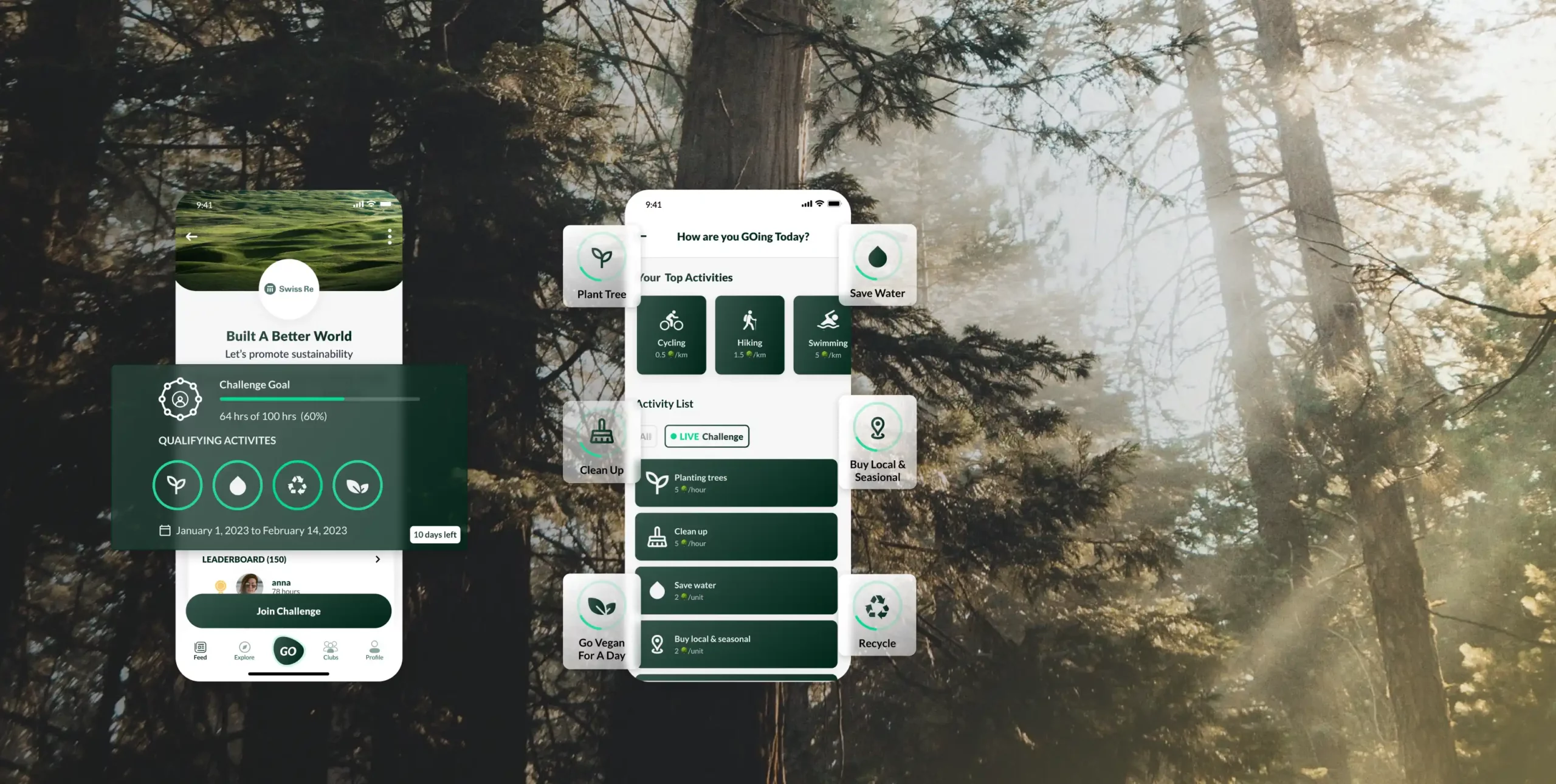In today’s world, sustainability is taking center stage, and businesses are facing increasing pressure to reduce their environmental impact. One area where companies can make a significant difference is mobility, as transportation accounts for a significant portion of carbon emissions. However, while promoting sustainable transportation options is important, it’s only the first step. To truly reduce their carbon footprint, organizations need to actively engage their employees in the effort.
Why is it important to reduce your carbon footprint at work?
Reducing your carbon footprint at work is crucial for mitigating climate change and promoting environmental sustainability. Carbon emissions contribute significantly to climate change, which has severe consequences for our planet, including rising sea levels, more frequent and severe weather events, and loss of biodiversity. By reducing your carbon footprint at work, you can help mitigate these effects and contribute to the larger effort to create a more sustainable and equitable world.
Additionally, reducing your carbon footprint at work is not only socially responsible but can also result in cost savings for businesses. Many sustainable practices, such as reducing energy consumption and waste, can help businesses reduce their operating costs and increase their profitability. By implementing these practices, businesses can also improve their reputation and attract environmentally conscious consumers.
10 ways employers can reduce carbon footprint at work

Employees are more likely to use sustainable transportation options if they are incentivized to do so. Offering perks such as discounted or free public transit passes, electric vehicle charging stations, or preferred parking spots for carpoolers can motivate employees to choose sustainable options over driving alone.
2. Provide education on sustainable transportation options
Some employees may not be familiar with sustainable transportation options, such as biking or taking public transit. Employers can provide education on these options, including how to access them and the benefits of using them. This can be done through workshops, seminars, or online resources.
3. Encourage active transportation
Active transportation, such as biking or walking, not only reduces emissions but also promotes physical activity and can improve employee health. Employers can encourage active transportation by hosting events such as bike-to-work days or walking challenges.
4. Set sustainability goals and track progress
Setting sustainability goals can help keep employees engaged and motivated to make a difference. Employers can set goals for reducing emissions or increasing sustainable transportation usage, and track progress regularly. This can be done through regular reporting or gamification to make it more engaging.
5. Provide on-site amenities for cyclists
Employers can install bike racks, shower facilities, and lockers to encourage employees to cycle to work. This not only promotes sustainability but also promotes employee health and wellbeing by providing opportunities for physical activity.
6. Offer telecommuting options
Employers can allow employees to work from home, reducing the need for commuting altogether. This can have a significant impact on reducing the company’s carbon footprint while also providing employees with flexibility and work-life balance.
7. Host a mobility challenge
Companies looking for an innovative solution to reduce their carbon footprint and promote a healthier lifestyle for employees should check out teroGO. This platform offers a range of activities centered around sustainable transportation and movement, including walking to work, carpooling, biking with friends, and more. Employees simply record their activities on the teroGO app, and each one directly contributes towards the company’s carbon emissions reduction goal.
What sets teroGO apart is that it’s not just about sustainability. The platform also features achievements and clubs, allowing employees to work towards personal goals and connect with colleagues who share similar interests. The app’s expert content also helps to improve employees’ overall wellbeing, which is crucial for both personal and professional success.
8. Implement a waste management plan
Consider setting up a recycling program for office waste, composting for organic waste, and proper disposal of hazardous materials.
9. Use energy-efficient equipment
Replace old appliances and equipment with energy-efficient models that consume less electricity and reduce the overall carbon footprint of the workplace.
10. Go paperless
Minimize paper usage by using electronic documents and communication channels such as email, digital calendars, and project management tools. This reduces the carbon footprint of the workplace while also promoting a more efficient and organized work environment.
Upcoming opportunities to engage employees around sustainable mobility
Promote sustainable transportation during European Mobility Week
European Mobility Week is an annual campaign that takes place from September 16-22 across Europe. The campaign is an initiative of the European Commission’s Directorate-General for Mobility and Transport, aimed at promoting sustainable mobility and encouraging local authorities to implement sustainable transport measures and policies.
During Mobility Week, cities and towns across Europe organize a range of activities and events, such as car-free days, bike rides, public transport promotions, and exhibitions on sustainable transport. The campaign aims to raise awareness of the environmental, economic, and social benefits of sustainable mobility, and to encourage citizens to make more sustainable transport choices in their daily lives.
Encourage green commuting in honor of World Car Free Day
World Car-Free Day is an annual event held on September 22nd, when people all over the world are encouraged to avoid using cars and instead use alternative modes of transportation, such as walking, cycling, public transport, or carpooling. The event aims to raise awareness of the negative environmental, economic, and social impacts of car use, such as air pollution, traffic congestion, and greenhouse gas emissions.
The first World Car-Free Day was held in 2000, and since then, the event has grown to become a global movement, with participation from over 1,500 cities in more than 40 countries. Many cities around the world organize car-free events and activities on World Car-Free Day, such as car-free zones, street parties, bike rides, and public transport promotions.
World Car-Free Day is not only a symbolic event, but it also encourages people to reconsider their daily transportation choices and adopt more sustainable and healthier modes of transport.
Now you’re prepared to reduce your carbon footprint at work
In this blog, we’ve highlighted ten effective ways for employers to reduce their company’s carbon footprint, such as providing incentives for sustainable transportation options, offering education on sustainable transportation options, and setting sustainability goals. We’ve also introduced innovative solutions like the teroGO mobility challenge, which can help engage employees and make sustainable transportation fun and rewarding.
In addition to these ideas, we’ve also highlighted upcoming opportunities like European Mobility Week and World Car-Free Day, which offer chances to engage employees and promote sustainable transportation at work. By taking advantage of these events and continuing to promote sustainable transportation options, companies can make a meaningful impact in reducing their carbon footprint and promoting a more sustainable future.
If you want to learn more about how teroGO can help, book a demo today.
Written by Kelly Baker, Content Marketing at atlasGO
This website stores cookies on your computer. These cookies are used to collect information about how you interact with our website and allows us to remember you. We use this information in order to improve and customize your browsing experience and for analytics and metrics about our visitors both on this website and other media. To find out more about the cookies we use, please see our Privacy Policy.




















